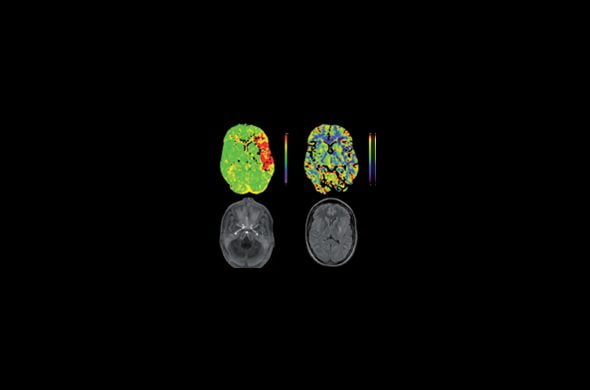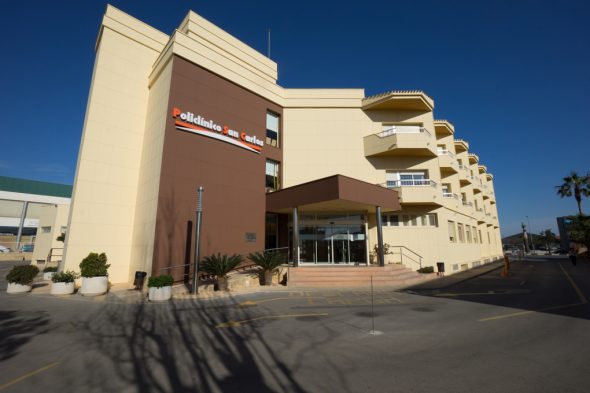Stroke, also known as cerebrovascular accident (CVA), cerebrovascular disease (CVD), stroke, stroke or, formerly called apoplexy is currently one of the most limiting diseases in the Western world, since they are the third leading cause of death, after the heart disease and cancer, and the leading cause of permanent disability, often causing irreversible neurological deficit.
The most benign form of stroke is called a transient ischemic attack (TIA), which causes neurological deficits secondary to focal ischemia, by definition, lasts less than twenty-four hours and leaves no sequelae. However, they should be studied all patients who suffer a "AIT" as they are people who are more likely to have a stroke in the future and share the same risk factors (diabetes, hypertension, atherosclerosis, elderly ...)
The true STROKE (in English STROKE) defined as a neurologic deficit that lasts longer than twenty four hours. They are divided into two distinct types from a semiotic view:
Ischemic strokes are the most common (80%) and due to the lack of blood flow in a vascular territory, which in turn can be focal (for arterial venous obstruction or in a particular area brain) or diffuse, due to alterations systemic, such as cardiac arrest, secondarily they cause a reduced blood supply to oxygen as avid as the brain region. They may also be subdivided into embolic (if the clot comes from elsewhere in the body) or thrombotic if the obstruction caused by the absence of risk "in situ" occurs. Clinically Ischemic strokes are characterized by a sudden sensory disturbance or motor, usually without decreased level of consciousness associated. The most common cause thereof is unknown up to 41% of cases, but there are many controllable risk factors such as hypertension (blood pressure, atherosclerosis, diabetes (DM), heart disease such as atrial fibrillation (AF ) or abuse of snuff and alcohol.

Moreover, Hemorrhagic strokes are secondary to bleeding or stroke in a defined area of the brain, either in the brain parenchyma itself (due to bleeding from a vessel that nourishes deep structures), as in the meninges or coverings of the brain ; subarachnoid space, causing a subarachnoid or HSA) hemorrhage, and subdural space, causing a subdural hematoma or HSD. Since bleeding produce less tissue damage ischemia, people who survive a stroke have better resilience in the long term. In turn, intraparenchymal bleeding can be subdivided into hypertensives, usually deeper location (thalamus, basal ganglia) or in the cerebellum, and amilodeas, shallower location and usually affect elderly population, especially if associated with Alzheimer's disease.
In young patients one of the most common causes of cerebral hemorrhages are arteriovenous malformations that occur spontaneously and are secondary to rupture of an aneurysm (vascular abnormality sac), an AVM (abnormally dilated arteries flowing into veins also abnormal), or any other aberration in CNS vessels. The most important risk factor in this group is high blood pressure (hypertension). Another very important risk factor is trauma.
It is very important to differentiate diagnosing ischemic stroke of a bleeding, since as stated in medical jargon "that saves ischemic kills a bleeding" because it is very common for an ischemic stroke is transformed into a bleeding.
For this reason, it is not trivial to emphasize the importance of early diagnosis, at the same time effective. The most currently used methods appear the CT (computed tomography), which detects bleeding of acute type, such as that are established within 24h. Also very important MRI (magnetic resonance imaging), very important when very accurately delimit brain anatomy or angiography, able to delimit the vascular tree accurately.

When addressing treatment, as a brief summary, general measures are used to keep the patient alive in all types of stroke, such as avoiding excessive blood pressure or temperature, monitor patients in units or intensive care, in extreme cases, perform emergency surgery to decompress certain areas of the brain that cause excessive compression massive brain damage. It is important in ischemic strokes, repermeabilizar the occluded vessel, with specific measures to this end (venous or arterial thrombolysis, mechanical thrombectomy ...). Moreover in Hemorrhagic strokes, must always evaluate surgical options
Finally we would like to emphasize the importance of primary prevention measures, avoiding risk factors such as excess alcohol and snuff and controlling others such as DM, hypertension or atherosclerosis, with measures ranging from healthy living to take if necessary any antiplatelet or anticoagulant treatment.
GUILLERMO GARCIA MARCH
JAIME RODRIGO BROSETA
FELIX PASTOR ESCARTIN
NEUROSURGERY. POLYCLINIC SAN CARLOS. DENIA






